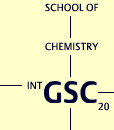 |


![]()
Name: Gokulan Thanabalasundaram
Diploma / M.Sc degree: Westfälische Wilhelms-Universität Münster, Germany
(August 2007)
PhD Project: Establishment and characterization of an endothelial cell-pericyte BBB-model in vitro
Abstract of Research Project
The blood-brain barrier (BBB) is a unique, selective barrier mainly formed by the brain capillary endothelial cells (BCECs) that line cerebral capillaries, together with perivascular cells such as pericytes, astrocytes and neurons. The collectivity of these cells is also referred to as the “neurovascular unit”. BCECs in the cerebrum construct one of the tightest barriers found in the body. Compared to endothelial cells from other tissues, it becomes clear that BCECs must have very specialized phenotype. The induction of the phenotype originates from the local environment, which is mainly provided by the cells from the neurovascular unit. The literature on the biology of BCECs and astrocytes is appreciable, but less is known about pericytes at the BBB. It was found that pericytes generally regulate endothelial proliferation and differentiation, influence capillary blood flow through contraction and relaxation and that they synthesize and release structural constituents of the basement membrane and extracellular matrix. Furthermore they are involved in specific microvascular diseases (e.g. diabetic retinopathy) and were recently discovered to play a critical role in tumour angiogenesis. The influence of pericytes on the BBB is currently a matter of particular interest. It is still not clarified how pericytes modify and regulate barrier characteristics.
To investigate the influence of these cell types it is essential to establish an appropriate pericyte endothelial cell in vitro coculture model. Based on the well established BBB model of the working group Galla, which consists of freshly isolated primary porcine brain capillary endothelial cells (PBCEC), a coculture model was developed together with primary porcine brain capillary pericytes (PBCPs) to approach a more in vivo like situation.
Tight junctions (TJ) form barriers between adjacent brain capillary endothelial cells and play an important role in preventing non-specific paracellular transport in order to protect the central nervous system. Main contributors to tight junctions are occludin, claudin 5 and zonula occludens 1 (ZO-1). Since TJ proteins are down-regulated in various brain disorders accompanied by junctional disruption, the expression levels of TJ proteins are important for maintenance of the BBB. By using the new coculture model it will be possible to examine the impact of pericytes on TJ maintenance and regulation under various conditions and so to clarify the role of pericytes in the neurovascular unit.
Higher transendothelial resistance (TER)-values in the coculture indicate that pericytes induce a tighter endothelial cell barrier up to day in vitro (DIV) 6. On the following days pericytes seem to down regulate the paracellular barrier integrity. The induction of occludin was also observed by immunocytochemical studies. Focusing the research on endothelial cell-pericyte interactions could lead to better understanding of the regulation of BBB properties.
Publications
G. Thanabalasundaram, C. Pieper, M. Lischper, H. J. Galla
Regulation of the blood-brain barrier integrity by pericytes via matrix metalloproteinases mediated activation of vascular endothelial growth factor in vitro
Brain Research 1347 (2010), 1-10.
M. Lischper, S. Beuck, G. Thanabalasundaram, C. Pieper, H. J. Galla
Metalloproteinase mediated occludin cleavage in the cerebral microcapillary endothelium under pathological conditions
Brain Research 1326 (2010), 114-127.
S. Kröll, J. El-Gindi, G. Thanabalasundaram, P. Panpumthong, S. Schrot, C. Hartmann, H.J. Galla
Control of the blood-brain barrier by glucocorticoids and the cells of the neurovascular unit
Ann N Y Acad Sci. 1165 (2009), 228-39.
Gokulan Thanabalasundaram
eMail: Gokulan Thanabalasundaram